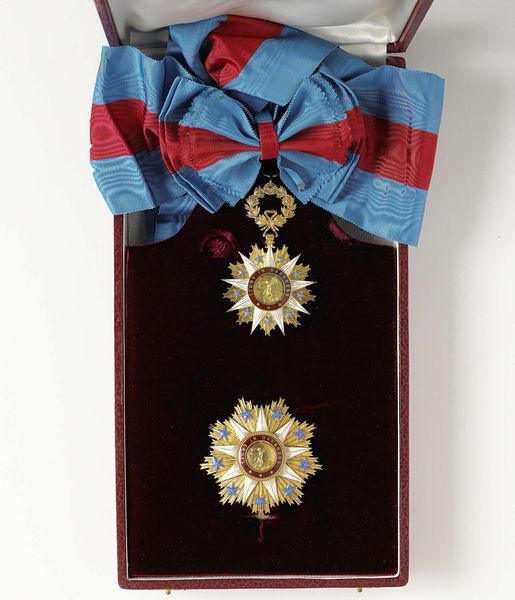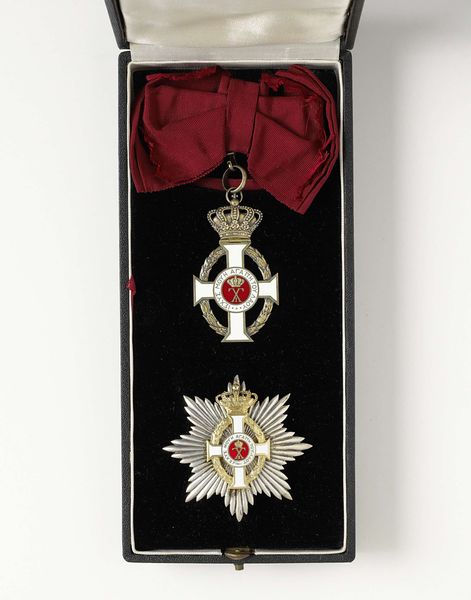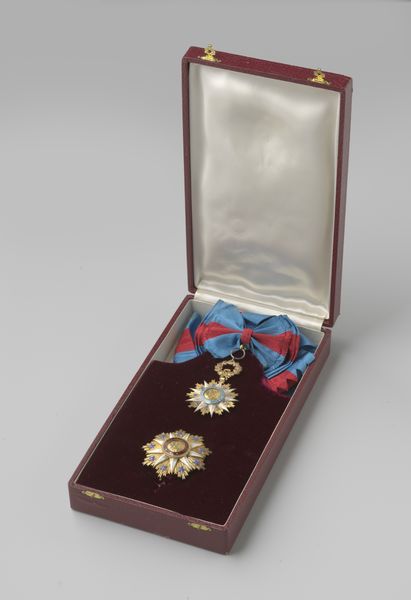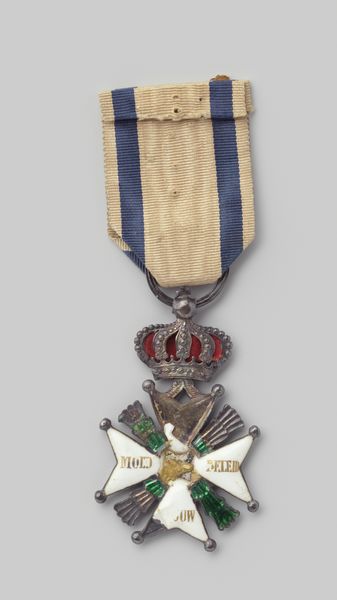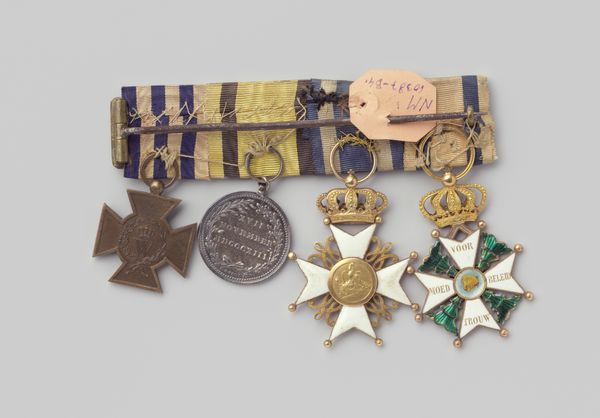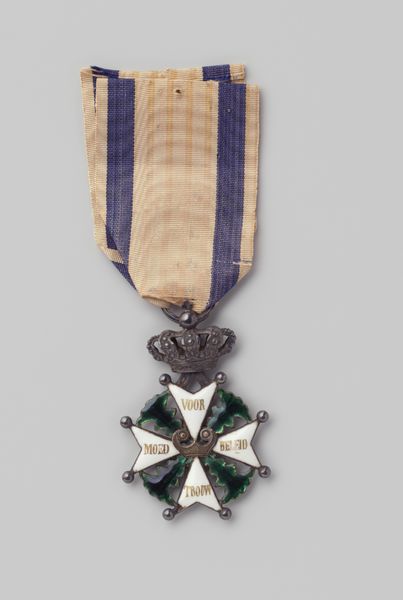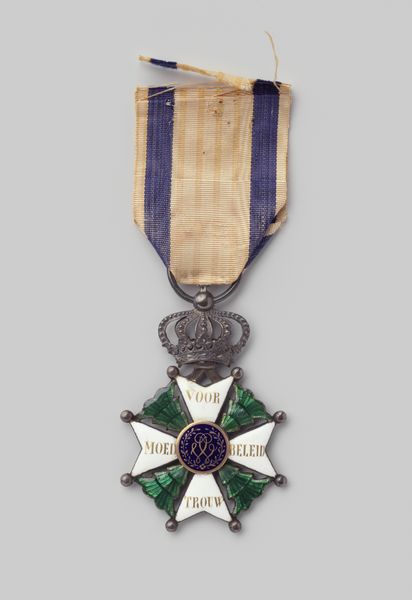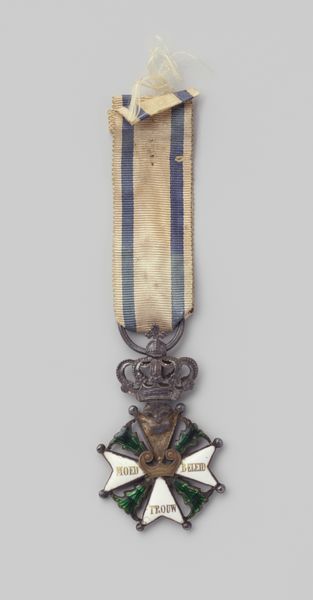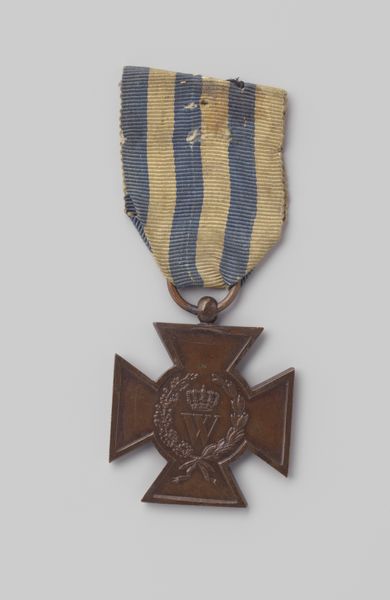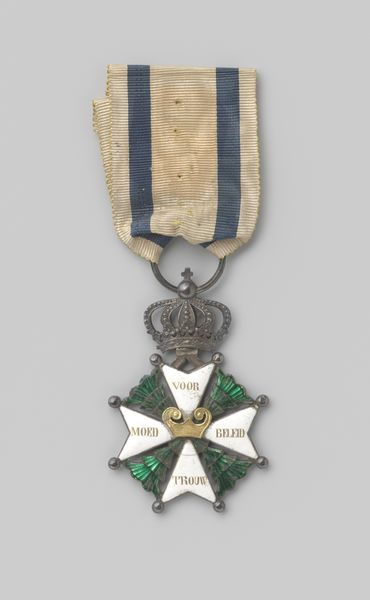
Luxemburgse ridderorde (Ordre du Merite Civil et Militaire d'Adolphe de Nassau), ontvangen door Willem Drees before 1956
0:00
0:00
#
decorative element
#
history-painting
#
decorative-art
#
decorative art
#
miniature
Dimensions: diameter 7.1 cm, diameter 7.7 cm, width 10.4 cm, length 82 cm, width 26 cm, height 5.7 cm, width 13.5 cm, depth 31.4 cm
Copyright: Rijks Museum: Open Domain
Editor: So, here we have the "Luxemburgse ridderorde (Ordre du Merite Civil et Militaire d'Adolphe de Nassau), ontvangen door Willem Drees," made sometime before 1956. It's a decorative piece, housed here at the Rijksmuseum. Looking at it, it feels so… formal and steeped in tradition, almost like frozen history. What do you see when you look at it? Curator: Ah, yes, this piece whispers of a bygone era! To me, it feels almost theatrical, doesn’t it? Like a prop from a lavish historical drama. All that glinting metal and sumptuous ribbon – it’s meant to impress. Imagine Willem Drees, a man known for his modesty and dedication to social welfare, receiving this symbol of merit. What do you think that moment felt like? Did he feel a sense of pride, or perhaps a slight discomfort with such opulent display? Editor: That’s a fascinating point! I hadn’t thought about the contrast between the man and the medal. I guess I was too caught up in the aesthetics. Curator: It’s easy to be, with these objects! The craftsmanship is exquisite, of course, but beyond that, consider the power imbued within these symbols. These aren’t mere decorations, but signifiers of rank, service, and national identity. Have you noticed the little details, the specific enameling, and the dates inscribed? Editor: Yes! I was wondering about the significance of the dates. Curator: They root the order in time. 1292, maybe when the Nassau family initially rose in prominence? And then 1858 likely connected with a restructuring. Such embellishments serve as reminders of historical weight and heritage. Editor: So it’s not just beautiful, but full of encoded meaning. Looking at it now, I see it less as a static object, and more as a symbol of social values and complex history. Curator: Exactly! The fun is in peeling back those layers, isn't it? History isn't static. It’s something we constantly re-evaluate.
Comments
No comments
Be the first to comment and join the conversation on the ultimate creative platform.
